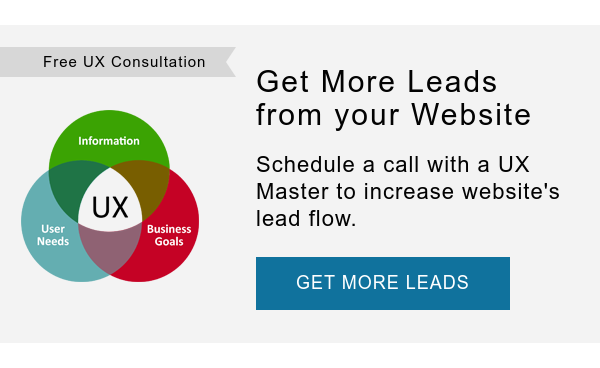10 Tips for Increasing Online Sales
 If you are planning on an e-commerce solution for your website, or if you already have one, chances are that you are looking for ways to maximize the value it presents to your customers and, as a result, maximize your sales. Well, you are in luck! Below is a list of the top ten ways you can make your e-commerce solution more effective and maximize customer satisfaction, increase order size and repeat orders, and maximize your sales.
If you are planning on an e-commerce solution for your website, or if you already have one, chances are that you are looking for ways to maximize the value it presents to your customers and, as a result, maximize your sales. Well, you are in luck! Below is a list of the top ten ways you can make your e-commerce solution more effective and maximize customer satisfaction, increase order size and repeat orders, and maximize your sales.
1. Minimize the Number of Steps
Let’s face it, we as customers are pretty impatient when it comes to ordering online. We don’t want a lot of steps and we don’t want a hassle. In fact, one of the major reasons for shopping cart abandonment is that there are too many steps in the order process. Ideally, you want to limit the checkout process to one step. That's right, one step. Anything longer and you are likely to see a high level of shopping cart abandonment. While it is true that these lost sales do not “cost” you anything in terms of expenses, you do pay a hefty price in lost sales – both in that sale and future sales lost to negative word-of-mouth – and that will have a very real impact on your company growth.
2. Up-sell and Cross-sell
Are you a restaurant that has an online ordering tool? If you are, you can increase per ticket order totals and overall sales by providing customers with in-cart recommendations on other menu items they might like, based on their initial order - such as suggesting a side salad to go with their sandwich. Do you make products marketed toward car owners who love to detail their car themselves? Why not suggest a larger size of that polish they just added to their cart or perhaps your tire and wheel cleaning product as well? A well-thought up-sell and cross-sell strategy will increase your sales by not only increasing the initial order total; it will also increase future order sales. By providing customers with other options they might not have considered, you will expose them to more of your products and increase order satisfaction (which will result in increased positive word-of-mouth advertising).
3. Loyalty/Rewards Program
Can we all be honest for a moment and admit it, we like getting free stuff and we are more likely to make purchases from businesses that give us the occasional freebie. Now, we’re not saying that customers should get something free with every order. That is actually counter-productive because it trains your customers to expect a freebie with every order and for the freebie to get better as their orders increase. But a well planned rewards program which rewards customers points with each purchase that can be applied toward a discount or add-on, provides free shipping on every fifth order, or gives a small gift for an order over a certain amount will build customer loyalty and repeat online orders.
4. User-Centric Messaging
Your website MUST give visitors a reason, or even better - REASONS, for taking the buying-actions you want them to take. This means your website must deliver strong value-propositions that let the customer know why they should buy from you and the specific benefits your product or solution will deliver. You want your messaging to connect, motivate, and inspire your visitors to act. In other words, don't make your website about you. Make it about how you will bring value to your visitors. And don't think that "user-centric messaging" is limited to just your website copy. It also includes custom photography, custom videos, downloadable guides, etc.
5. Calls-to-Action
Just as a beautiful, exciting car without an engine won't get you anywhere, an e-commerce website without strong calls-to-action will not generate sales. Obviously, the most important call-to-action on an e-commerce website is the "Add to Cart" button on the product/service page. This button should be easy to find and you should even consider multiple locations within the product/service page. The next most important call-to-action is your up-sell and cross-sell notification - both as the customers are adding products and as they are checking out. This is a great tool for increasing engagement and knowledge about your product offerings and, as a result, increasing sales. But there are many calls-to-action you can include on your e-commerce website that, while might not lead to immediate sales, will certainly help to increase sales over time by moving your website visitors along the process. Examples of more passive calls-to-action are placing your phone number in numerous locations in the website, allowing visitors to join your email list at multiple locations, contact forms / requests for more information, and even a Live Chat feature. The point is, the more options you provide your visitors to interact with you, the better your e-commerce website is going to perform.
6. Custom Photography
Let’s revisit our restaurant example again. Think about your own experiences ordering food online. Which restaurant would you be more likely to order from: (1) the restaurant with a PDF of their take-out menu or (2) the restaurant with a menu that features mouth-watering, hunger-inducing photos that make you want to click “Add” faster than Usain Bolt runs the 100-meter dash? We thought so. Whether you are a restaurant, consumer retailer, or manufacturer of high-end electronics, custom photography depicting your customers using your products will deliver a stronger message and showcase your products in a way that no stock photography ever could. This, in turn, will lead to higher sales because customers are more engaged and trust level is higher.
7. On-page Customer Testimonials
Whether you sell to businesses, consumers, or both, there are few forms of marketing communication that are more effective in establishing credibility, building trust, and increasing purchase decision confidence than a testimonial from satisfied customers. Just like in many other areas of life, we, as consumers like validation that our purchase decision was a wise one. You can provide potential customers this validation with testimonials from satisfied customers on the product page, encouraging them to add the product to their shopping cart.
8. Post-order Email Campaigns (Recommendations)
It is a given that you should collect your customers' email addresses with every order. At the very least, this is how you will communicate with them to (1) confirm the order, (2) communicate any issues or concerns with the order, and (3) let the customer know when their order has been processed or shipped. But those are not the only reasons to email your customers post-order. Much like in-cart up-selling and cross-selling, a post-order email (not right way, mind you) is a great way to increase future sales by suggesting related products, or size options, that the customer might also want to purchase on their next order.
9. Track Abandoned Orders
This one is easy-to-do and straightforward in how it will improve your e-commerce solution. By tracking abandoned orders in a database maintained in your website’s Administrative Console, you potentially have the ability to contact customers who did not complete their order (assuming you have gathered their contact information) and ask why they did not complete their order. This is a great way to learn about issues present in your existing shopping cart and checkout process, as well as other issues that might be present such as product selection, pricing, unexpected costs (such as taxes and shipping), etc. At the minimum, you will have the ability to track at what points consumers abandon the shopping cart and help you identify problem areas. By following the tips above, you will be well on your way to improving the performance of your e-commerce solution. You can learn about more ways to improve your website by subscribing to our blog (if you are not already done so).
10. Add a Retailer Locator Tool to Your Website
Now, we will admit, this sounds a little incongruous to making your e-commerce solution more successful and, at first blush, we would agree with you. But, the reality is that not all consumers like to(or are comfortable with) shopping online. As a result, a great way to capture those sales is by giving such consumers the ability to quickly find a place where they can buy your product in person. Plus, if you have multiple products in your brand family, it provides the opportunity for increased exposure while the customer is in the store. 





